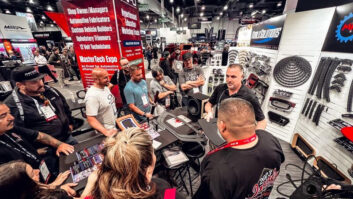E-tailing has finally turned a corner.
Following a tumultuous infancy marked by an exceedingly high mortality rate, a majority of e-commerce survivors are now turning a profit, according to a study by Shop.org, the e-tail offshoot of the National Retail Federation (NRF).
The annual report, titled The State of Retailing Online 5.0, shows that fully 56 percent of respondents had profitable online operations in 2001, up from 43 percent the year prior. Over the same period, total online sales grew 21 percent to $51.3 billion.
Shop.org foresees further profitability and expansion in 2002 due to continued growth in online sales — projected to increase 41 percent to $72.1 billion — and improving cost efficiencies.
The benchmark report, conducted by The Boston Consulting Group with market-sizing data supplied by Forrester Research, is based on the responses of more than 100 e-tailers in 15 different categories. Respondents have annual revenue of $5 billion or better, and include closely held companies and brick-and-mortar merchants that don’t generally break out their online businesses.
The aggregate U.S. online retail market also moved closer to profitability last year. On the whole, operating margins rose from a net loss of 15 percent in 2000 to a loss of 6 percent in 2001, with break-even expected this year.
On a channel basis, catalog-based companies fared best with positive margins of 6 percent, ostensibly owing to their prior experience in direct sales. Bricks-and-clicks businesses took the middle ground with losses of 5 percent in their online operations last year, while pure plays fared the worst, with declines of 13 percent in operating margins.
“Consumer adoption of the online channel has reached critical mass, and retailers have been able to respond by turning this trend into profits,” said Elaine Rubin, chairman of Shop.org. “This is all the more remarkable in a year like 2001, which experienced a weak economy.”
Also contributing to increased profitability were operational performance improvements in such areas as marketing efficiency.
Marketing efficiency increased significantly, the report showed, resulting in marketing costs per order falling from $20 in 2000 to $12 in 2001, and customer acquisition costs dropping from $29 in 2000 to $14 in 2001. Repeat buyers accounted for better than half of online sales in 2001, up from 40 percent in 2000.
Online penetration by category also grew. Of the 15 categories studied, sales in seven, including consumer electronics, computer hardware and software, music and video, toys and books, represented more than 5 percent of all retail sales for those respective categories last year.
Penetration in some sectors was even higher, with computer hardware and software, for example, owing nearly 18 percent of its total dollar volume to online sales in 2001 and as much as 23.4 percent projected for 2002.
Online sales of PC related products are expected to grow 34 percent this year to $7.9 billion, the study says.
The Internet’s share of total CE retail sales was less dramatic at 5.3 percent last year and 6.6 percent projected for 2002. Online CE sales are expected to grow 32 percent this year to $3.4 billion.
By contrast, online penetration for electronics was still nearly double the Internet’s 2.4 percent share of all retail sales in 2001.
Changing Channels: Dot.coms’ Share of Retail Sales













